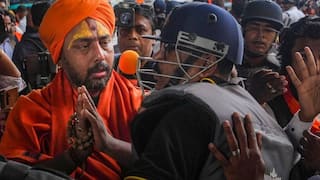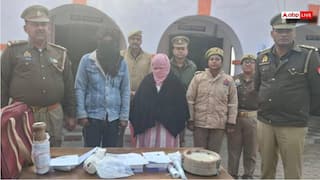US Facility Preserves Bodies Of The Dead In Hopes Of Resurrecting Them In Future
As many as 199 humans in Scottsdale, Arizona, opted to be cryopreserved inside tanks filled with liquid nitrogen, after their legal death.

Resurrection of the dead is seen only in science-fiction and horror movies and books. However, human beings are trying to make this possible in real life through cryonics, the practice of preserving humans and animals after legal death at the cryogenic or freezing temperatures, in the hope of resurrecting them to a healthy living condition in the future.
As many as 199 humans in Scottsdale opted to be cryopreserved inside tanks filled with liquid nitrogen, after their legal death, news agency Reuters reported.
Which patients opted to be cryopreserved?
Alcor Life Extension Foundation, an American organisation that performs cryonics said many of the patients were terminally ill with cancer, amyotrophic lateral sclerosis (a rare neurological disease that primarily affects the nerve cells responsible for controlling voluntary muscle movement), or other diseases with no present-day cure. They opted to be cryopreserved in hopes of being resurrected in the future.
According to a Reuters report, Matheryn Naovaratpong, a Thai girl with brain cancer, was cryopreserved in 2015, when she was two years old. She is the youngest person to be cryopreserved.
Quoting Max More, chief executive of Alcor, the report said both her parents were doctors and she had multiple brain surgeries. Unfortunately, nothing worked, and hence, they contacted Alcor, More said.
Bitcoin pioneer Hal Finney was another Alcor patient. He had his body cryopreserved after his death from amyotrophic lateral sclerosis in 2014.
How is the cryopreservation process performed?
The cryopreservation process can begin only after a person is declared legally dead. According to the report, blood and other fluids from the body of the patient are removed as part of the cryopreservation process, and replaced with chemicals designed to prevent the formation of damaging ice crystals.
Alcor patients are vitrified (converted into a glassy-like state) at extremely cold temperatures, and then placed in tanks at the Arizona facility "for as long as it takes for technology to catch up", More said.
How much should people pay to be cryopreserved?
People who wished to be cryopreserved had to pay for the process. The minimum cost for cryopreserving a body is $200,000 (1,64,23,676 INR) and that for the brain alone is $80,000 (65,74,682 INR). More said that Alcor's almost 1,400 living "members" pay by making the company the beneficiary of life insurance policies equal to the cost.
More's wife Natasha Vita-More said if the disease or injury is cured or fixed and the person has a new body cloned or a whole prosthetic of their body reanimated, they can meet up with their friends again.
What do medical professionals think about this?
However, many medical professionals disagree with this process, according to Arthur Caplan, who heads the medical ethics division at New York University's Grossman School of Medicine.
According to the report, he said the notion of freezing ourselves into the future is pretty "science fiction" and it is "naive". Taking a dig at those involved in cryonics, Caplan said the only group which is getting excited about the possibility of resurrecting dead people in the future are those who specialise in studying the distant future or people who want others to pay money to do it.Ari






































